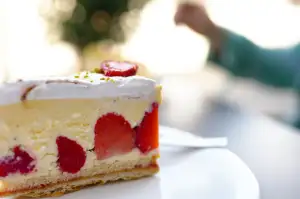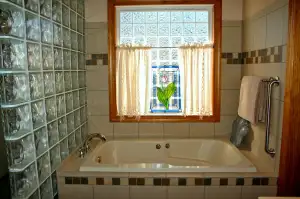Mastering the Art of Cooking: A Step-by-Step Guide on How to Use a Convection Oven at Home

Convection ovens have revolutionized the way we cook, offering faster and more efficient results. Unlike traditional ovens, which rely on radiant heat, convection ovens use a fan to circulate hot air evenly throughout the cooking chamber. This ensures that your food cooks more quickly and evenly, resulting in perfectly cooked dishes every time. Whether you're a seasoned chef or just starting out in the kitchen, mastering the art of cooking with a convection oven is a skill that will elevate your culinary creations to new heights. In this step-by-step guide, we'll explore the basics of using a convection oven at home and provide you with valuable tips and techniques to help you become a convection oven pro. So let's dive in and unlock the full potential of this remarkable kitchen appliance!
Understanding the Basics of a Convection Oven
A convection oven is a kitchen appliance that uses a fan to circulate hot air evenly throughout the cooking chamber. This results in faster and more even cooking, making it a popular choice for many home cooks. Unlike traditional ovens, which rely on radiant heat, convection ovens use both radiant heat and forced air to cook food.
The fan in a convection oven helps to distribute the heat more efficiently, ensuring that every part of the dish is cooked evenly. This can be especially beneficial when baking delicate pastries or roasting meats, as it helps to prevent uneven browning or undercooking.
It's important to note that not all recipes are suitable for convection cooking. Some dishes may require adjustments in cooking time and temperature to account for the increased efficiency of a convection oven. It's always best to consult your oven's manual or recipe guidelines for specific instructions.
In addition to faster cooking times, using a convection oven can also help reduce energy consumption compared to traditional ovens. The circulating hot air allows you to cook at lower temperatures while still achieving the same results. This can be particularly advantageous during hot summer months when you want to avoid heating up your kitchen.
Overall, understanding the basics of how a convection oven works is essential for mastering its artistry in your own kitchen. By harnessing its unique capabilities, you can elevate your cooking skills and create delicious meals with ease and precision.
Preheating the Convection Oven
Before you begin cooking with a convection oven, it is important to preheat it properly. Preheating ensures that the oven reaches the desired temperature before you start cooking, allowing for more accurate and efficient cooking.
To preheat your convection oven, simply turn it on and set the temperature according to your recipe. Most convection ovens have a preheat button or setting that you can use. Once you have set the temperature, allow the oven to preheat for about 10-15 minutes.
During this time, the oven will heat up and distribute hot air evenly throughout the interior. This is crucial for achieving consistent cooking results. Preheating also helps to eliminate any residual odors or flavors from previous cooking sessions.
It's important to note that preheating times may vary depending on the brand and model of your convection oven. Always refer to the manufacturer's instructions for specific guidelines.
By taking the time to properly preheat your convection oven, you'll ensure that your food cooks evenly and thoroughly, resulting in delicious meals every time.
Adjusting Cooking Time and Temperature
One of the key advantages of a convection oven is its ability to cook food faster and more evenly. However, this also means that you need to make adjustments to the cooking time and temperature compared to a conventional oven.
When using a convection oven, it is recommended to reduce the cooking temperature by about 25 degrees Fahrenheit (or 15 degrees Celsius) compared to what is stated in the recipe. This is because the hot air circulation in a convection oven cooks food faster.
In terms of cooking time, you can generally reduce it by about 25% compared to what is recommended for a conventional oven. For example, if a recipe states that you should bake something for 30 minutes in a conventional oven, you would only need around 22-23 minutes in a convection oven.
However, it's important to keep an eye on your food while it's cooking and use your judgment. Every convection oven may vary slightly in terms of heat distribution and airflow. You may need to experiment with different temperatures and cooking times until you find what works best for your specific oven.
Remember to always use an accurate thermometer to check the internal temperature of your food, especially when cooking meat or poultry. This will ensure that your food is cooked thoroughly and safely.
By adjusting the cooking time and temperature properly, you can take full advantage of the efficiency and evenness that a convection oven offers. It may take some trial and error at first, but with practice, you'll become more comfortable with using this versatile appliance.
Using the Convection Setting for Baking
Baking in a convection oven can result in perfectly golden and evenly cooked baked goods. To use the convection setting for baking, start by preheating the oven to the recommended temperature. Then, place your baking dish or tray on the center rack of the oven.
Next, adjust the cooking time and temperature. In general, you can reduce the temperature by 25 degrees Fahrenheit (or about 15 degrees Celsius) and decrease the cooking time by about 25%. This is because convection ovens circulate hot air more efficiently, resulting in faster and more even cooking.
When using the convection setting for baking, it's important to keep an eye on your baked goods as they may cook faster than usual. Use a timer to avoid overcooking or burning your creations.
Additionally, consider using light-colored or non-stick pans to prevent excessive browning. The circulating hot air in a convection oven can cause darker browning on baked goods compared to traditional ovens.
Remember to rotate your pans halfway through baking to ensure even browning and cooking. This will help you achieve consistent results with every batch.
Lastly, be mindful of any adjustments needed for recipes that were originally designed for conventional ovens. It may be necessary to make slight modifications to account for the faster cooking time and increased heat distribution in a convection oven.
By following these tips and experimenting with different recipes, you'll soon become a master at using the convection setting for baking in your own kitchen. Enjoy creating delicious treats with ease and precision!
Using the Convection Setting for Roasting
Roasting is a popular cooking method that brings out the flavors and textures of meats, vegetables, and even fruits. With a convection oven, you can achieve perfectly roasted dishes with ease.
To start, preheat your convection oven to the desired temperature. The convection setting will circulate hot air evenly throughout the oven, ensuring that your food cooks evenly from all sides.
When roasting meat, it's important to place it on a rack or in a shallow pan to allow the hot air to circulate around it. This will result in a crispy exterior and juicy interior. For vegetables, spread them out on a baking sheet so they have room to cook evenly.
Adjusting the cooking time is crucial when using the convection setting for roasting. Since convection ovens cook food faster than traditional ovens, reduce the cooking time by about 25%. Keep an eye on your dish as it cooks to prevent overcooking.
To achieve optimal results, use a meat thermometer to ensure that your meat reaches the desired internal temperature. This will help you avoid undercooking or overcooking your roast.
Remember to rotate your dish halfway through cooking to ensure even browning and doneness. This is especially important for larger cuts of meat or when roasting multiple items at once.
Using the convection setting for roasting can also help you achieve a beautiful caramelization on your dishes. The circulating hot air helps create a golden brown crust on meats and vegetables, adding depth of flavor and visual appeal.
With practice and experimentation, you'll soon become adept at using the convection setting for roasting various ingredients. Enjoy exploring new flavors and textures as you master this artful cooking technique with your convection oven.
Tips for Properly Using a Convection Oven
1. Use the right cookware: Opt for shallow, flat pans that allow hot air to circulate evenly. Avoid using deep pans or ones with high sides as they can obstruct the airflow.
2. Adjust cooking time and temperature: Since convection ovens cook food faster, reduce the recommended cooking time by about 25%. Similarly, lower the temperature by 25°F (15°C) to prevent overcooking.
3. Monitor your food: Keep an eye on your dishes while they're cooking in a convection oven. The circulating hot air can cause food to brown quickly, so it's essential to check for doneness frequently.
4. Rotate the pans: To ensure even browning and cooking, rotate the pans halfway through the cooking process. This will help avoid any hot spots in the oven.
5. Don't overcrowd the oven: Give your food enough space for proper airflow. Overcrowding can hinder heat circulation and result in unevenly cooked dishes.
6. Use lower racks for delicate items: If you're baking delicate items like cakes or pastries, place them on lower racks to prevent excessive browning or burning due to direct heat exposure.
7. Shield with foil if necessary: If you notice that your dish is browning too quickly on top, cover it loosely with aluminum foil to prevent further browning while allowing it to continue cooking.
Remember these tips when using a convection oven to make the most out of its capabilities and achieve delicious results every time!
Cleaning and Maintenance of a Convection Oven
Cleaning and maintaining your convection oven is essential to ensure its longevity and optimal performance. Here are some tips to help you keep your oven in top condition:
1. Regularly clean the interior: After each use, wipe down the interior of the oven with a damp cloth or sponge to remove any spills or food debris. For stubborn stains, use a mild detergent and warm water solution.
2. Clean the racks and trays: Remove the racks and trays from the oven and wash them separately using warm soapy water. Scrub off any grease or residue, then rinse and dry them thoroughly before placing them back into the oven.
3. Clean the door: The glass door of your convection oven can become greasy over time. Use a glass cleaner or a mixture of vinegar and water to clean it. Avoid using abrasive cleaners that can scratch the glass.
4. Clean the exterior: Wipe down the exterior of the oven with a soft cloth or sponge dipped in warm soapy water. Be careful not to get any water into the control panel or vents.
5. Check and replace filters: Some convection ovens have filters that need regular cleaning or replacement. Refer to your oven's manual for instructions on how to clean or replace these filters.
6. Schedule professional maintenance: It's recommended to have your convection oven professionally serviced at least once a year to ensure it is functioning properly and all components are in good condition.
By following these cleaning and maintenance tips, you can keep your convection oven in excellent shape, ensuring delicious meals for years to come!
In conclusion, mastering the art of cooking with a convection oven can greatly enhance your culinary skills. By understanding the basics of how a convection oven works and properly adjusting cooking time and temperature, you can achieve perfectly cooked meals every time. Whether you're baking or roasting, the convection setting can provide even heat distribution for delicious results. Remember to follow the tips for using a convection oven properly and don't forget to regularly clean and maintain your oven for optimal performance. With practice and experimentation, you'll soon become a pro at utilizing the artistry of food with your convection oven. Happy cooking!
Published: 10. 12. 2023
Category: Home



